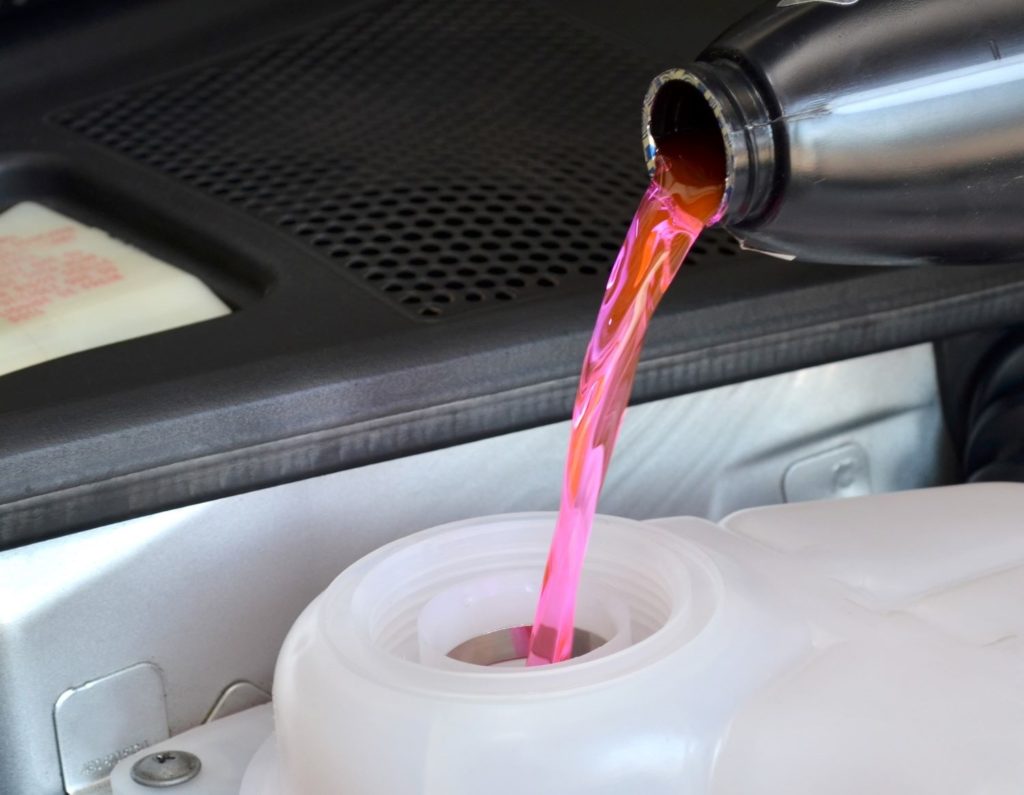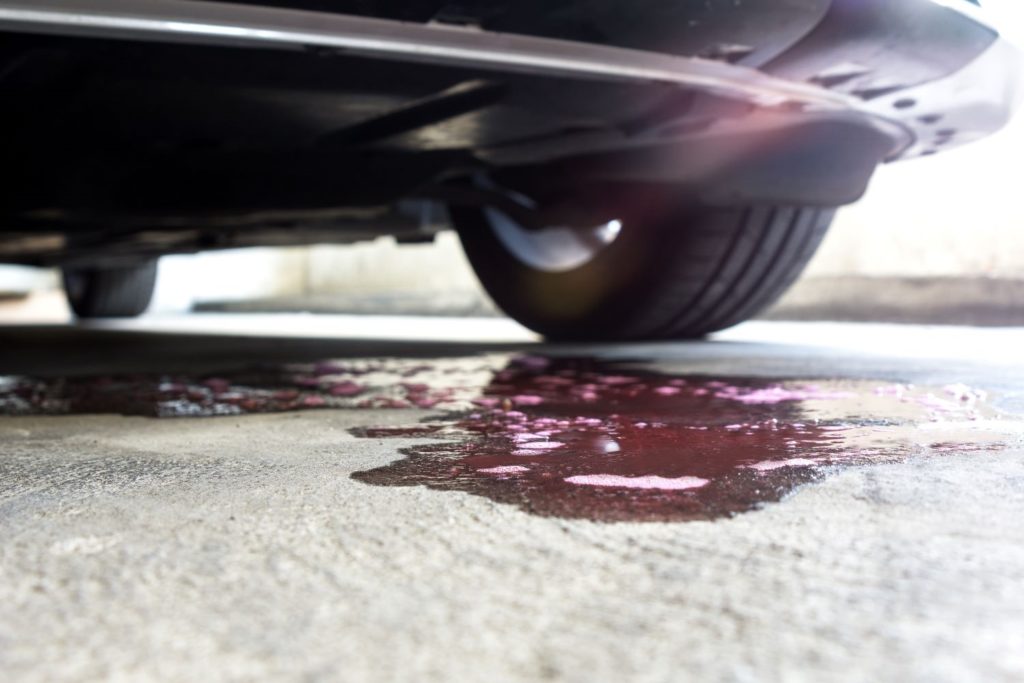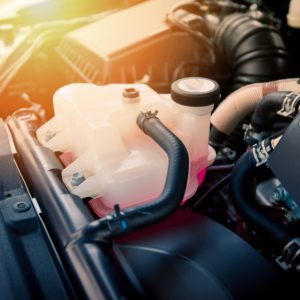When your engine’s coolant is contaminated with motor or transmission oil, it becomes thick and milky brown in appearance. Tainted coolant can lead to premature water pump and radiator failure, among other things. You’ll have to flush your old or dirty coolant to keep your vehicle’s cooling system in good working order.
Coolant contains several chemicals that are toxic to humans and animals. If you need to dispose of your coolant, you’ll have to do it the right way to avoid any health risks. Here are some things you should know before getting rid of your old, dirty, or spilled coolant.
What is Coolant?
Coolant is used to keep internal combustion engines at the proper operating temperature, especially in extreme weather conditions. It contains a concentrated, glycol-based fluid called antifreeze. Antifreeze reduces water’s freezing temperature while raising its boiling point. Your vehicle’s water pump supplies coolant to the engine to keep it from overheating or freezing.

Additives within the antifreeze can expire and become less efficient at fighting engine corrosion. We recommend that you replace your antifreeze according to the expiration date specified by the manufacturer.

What Makes Coolant Toxic to Humans and Animals?
Coolant is highly toxic to humans and animals because of antifreeze’s high glycol content. Ethylene glycol and propylene glycol are two types of antifreeze. When ingested, ethylene glycol can attack an individual’s central nervous system, heart, or kidneys, resulting in death. Though less toxic than ethylene glycol, propylene glycol can be just as harmful when ingested in high doses.
Ethylene Glycol Antifreeze
Ethylene glycol is a colorless and viscous liquid mainly used in consumer products, such as antifreeze, hydraulic brake fluids, paints, and solvents. It can cause birth defects, reproductive problems, or organ damage if ingested. You should be careful when disposing of ethylene glycol because its sweet smell can attract pets and small children.
Propylene Glycol Antifreeze
Propylene glycol can be found in food, cosmetics, personal care products, and antifreeze. It’s less toxic than ethylene glycol in small amounts. However, you should also keep it away from small children and pets to minimize the risk of accidental ingestion.
What Happens if I Pour Coolant Down the Drain?
Anything you pour down the drain will inevitably end up somewhere. Coolant can flow out of your storm drain and attract the attention of your pets because of its sweet smell and taste. Flushing old coolant down the toilet is also a bad idea because it can corrode your metal plumbing due to its high acidity. Some states have made it illegal to flush antifreeze down the toilet or dispose of it in sewer systems.

What Happens if I Spill Coolant on the Ground?
When performing routine maintenance on your vehicle’s cooling system, you might accidentally spill coolant on the ground. You should immediately wipe off any spilled coolant to avoid accidental consumption by family members and household pets. If you see a greenish, yellowish, or reddish pool forming underneath your vehicle, you should inspect your cooling components for signs of wear.
How to Dispose of Coolant Safely
Because coolant contains chemicals that are harmful to the environment, you’ll have to be careful where you dump it. You can dispose of old, used, or contaminated coolant at your local recycling center, service station, or auto parts store. Follow these tips for easy and safe coolant disposal.
- Check the condition of your antifreeze. There are different disposal methods for old, used, or contaminated antifreeze. Contaminated antifreeze should be handled separately.
- When flushing coolant from your vehicle, remember to wear gloves to avoid getting antifreeze on your skin. Place a large drain pan underneath your vehicle’s drain plugs to catch any spills and keep your garage floor clean.
- Make sure to store your contaminated antifreeze in a secure, leak-free container. You should dispose of contaminated antifreeze at the appropriate disposal facility because it might contain heavy metals, which are considered hazardous waste. You can also hire a commercial waste hauler to collect the contaminated antifreeze on your behalf.
- Some service stations, recycling centers, and auto parts stores are willing to accept and dispose of your old or contaminated antifreeze. As previously stated, the disposal requirements for old and used antifreeze differ from those for contaminated antifreeze. Call ahead of time to make sure that the facility you’ve chosen accepts the type of antifreeze you want to get rid of.
Why Should I Flush My Coolant?
Antifreeze can become acidic over time and corrode metal components in your engine and cooling system. You’ll need to flush your coolant periodically to remove any rust and mineral deposits, which can prevent your cooling system from operating efficiently. Coolant flushes can be performed by a mechanic using a machine, but they can also be done at home using a radiator cleaner.
Here’s a helpful video about changing your coolant:
Get Replacement Radiators and Water Pumps Delivered to You
Contaminated coolant can lead to the failure of cooling system parts like the radiator and water pump. To avoid additional issues that might cost more to repair, replace the bad parts before driving your car again. Fortunately, you don’t have to wait long for CarParts.com to deliver the replacement radiator and water pump you ordered.
CarParts.com delivers auto parts and accessories like radiators and water pumps to your doorstep. We operate several strategically located distribution centers across the US, and the nearest warehouse will process your order and ship our on-hand parts to save time. If you live in the continental US and place your order before noon ET, the replacement radiator or water pump you ordered will arrive at your doorstep in several business days. Purchasing our parts takes only several mouse clicks or screen taps on our secure website. Furthermore, you’re assured of getting high-quality cooling system parts because we only source our products from trusted brands.
If it’s time to get a replacement for a failed radiator or water pump, look no further than CarParts.com. Check out our selection of radiators and water pumps today!
Any information provided on this Website is for informational purposes only and is not intended to replace consultation with a professional mechanic. The accuracy and timeliness of the information may change from the time of publication.































